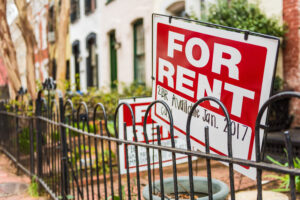For the past two years rent control has been one of the top legislative trends in the rental housing industry. While the industry has seen both victories and losses on this front, the fight against tenant-popularized rent control bills continues. Which cities are being targeted next? If you have properties in California, Illinois, or Providence, R.I., you’ll want to look out for these rent control initiatives.
What is Rent Control?
To recap – rent control (also known as rent stabilization) would allow local and/or state governments to control and regulate the rental amount you charge. While many states have legislation in place that ban rent control, some local governments have been able to bypass this via rent stabilization ordinances. Additionally, there have been several initiatives to remove these state-wide bans (although none have been successful so far).
Rent control is not a new idea. In recent times it’s been popularized by multiple tenant’s rights groups who believe it can help alleviate the rising rental rates in major metros. However, this is only a temporary solution to a much larger problem: a rental housing shortage.
Learn why most multifamily professionals oppose rent control.
The Rent Control War in California
If you’ve been following the ApplyConnect blog for a while, you’ll know that California is in the midst of an all-out rent control war. After AB 1506 (BLOOM), a bill that would have repealed the Costa-Hawkins Act, was defeated in committee earlier this year, activists have doubled down on their efforts to put rent control on the 2018 ballot. Cities currently targeted are Glendale, Inglewood, Long Beach, Pasadena, Sacramento, and Santa Cruz. The majority of these groups in the above cities are still collecting signatures. None have officially made it to the ballot yet.
Keep in mind that the ordinances proposed in each city differ. For example, the rent control proposal in Glendale caps annual rent increases at 4%, while the proposal for Pasadena caps increases at 4.5%. Beyond a difference in rent increase caps, some proposals (like Long Beach) also introduce ‘just cause’ eviction requirements and would require all landlords to pay an annual rental housing fee.
The Beginnings of Illinois Rent Control
While Illinois is in the early stages of rent control legislation, their two bills (HB 2430 and companion bill SB 2310) are no joke. Both bills aim to repeal the Rent Control Preemption Act, which currently prohibits local governments from enacting rent control. Additionally up to 10 wards in the city of Chicago will see a proposal on the topic on the March 20th primary ballot. The Gazette Chicago reports that this includes the 1st, 3rd, 4th, 12th, and 25th wards. The Chicagoland Apartment Association strongly opposes this bill, citing that “it hurts lower-income residents more than it helps, benefits higher-income renters, and causes larger economic disruptions in the affordable housing market.”
Rent Control Might Be Coming to Providence, R.I.
According to The Associated Press (AP), tenant activists are aiming to put a rent-control initiative on the fall 2018 ballot. During a protest against the eviction of an elderly couple, one activist stated that the Direct Action for Rights and Equality (DARE) organization in the area has started collecting signatures.
Since our last update, Washington State’s HB 2583 died in committee after failing to meet the legislative cutoff date. The city council of Santa Ana, CA also decided to reject rent control measures. While these two victories are significant, it isn’t over yet. Rent control legislation has proven to be a resilient trend within the housing industry and it will continue to spread. As rent control makes its steady crawl throughout the nation, have your Senator’s and your Congressmen’s contact information ready.







